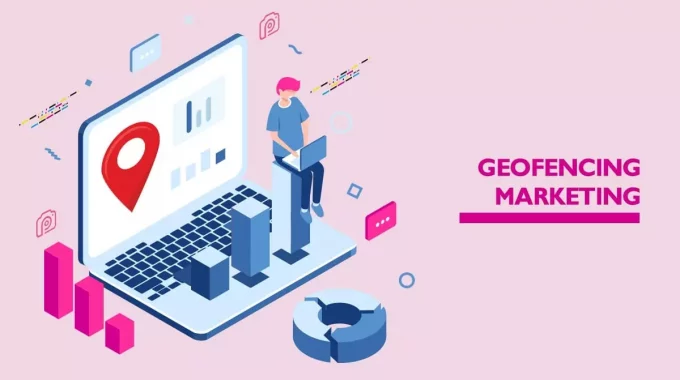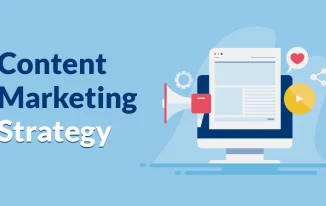Geofencing marketing is the most effective method for attracting mobile consumers. Mobile advertisers can use location data to sell products and services, while customers can receive tailored content depending on their interests and preferences.
Marketers can turn existing apps into strong marketing tools that enhance user experience, drive traffic to stores, and increase revenue with contextualized mobile marketing campaigns.
What Is Geofencing Marketing?
Businesses utilize geofencing marketing, a service based on geographic location, to engage their target audience. Mobile phone users who cross a predetermined threshold or geographic area receive relevant notifications.
Mobile and desktop marketing strategies that allow local, multi-channel businesses to communicate with consumers and potential customers who are in the area and make a purchase, before they even walk into a room, are a part of this strategy.
When a customer or potential customer searches for a product or service in a given place, such as a mall, business, or even neighborhood, marketers can send targeted offers or promotions to their mobile devices.
Customers are bombarded with useless advertisements as the market continuously shifts. Businesses can use geofencing to take advantage of two critical parts of the customer journey: time and location.
What Is the Process Of Geofencing Marketing?
Successful geofencing marketing fosters meaningful connections between a firm and a consumer or potential customer, resulting in increased sales. With the right mix of technology and targeted messaging, businesses can make the most of this mobile marketing strategy.
Technology is the first step in geofencing. A fence is built using technologies like beacons, GPS, and even IP addresses in this sort of marketing. An app or search term entered into a mobile device can trigger advertising, messages, or notifications for someone in a certain location.
The geofencing method generates fewer, but significantly more qualified leads, due to its relatively isolated and hyper-targeted audience. As a result, you'll get more high-quality clicks and see an increase in your ROI and ROAS (return on ad spend).
To be successful, you must be able to meet your customers where they are. In order for this to work, you need to know your customers and use "near me" searches to your advantage. This type of advertising relies heavily on search metrics and demographics to succeed.
What Technologies Are Utilized By Geofencing Marketing?
Geofencing is a location-based system that relies on a number of different components, including Wi-Fi, GPS, RFID, and Bluetooth. Business owners can now do what was unimaginable decades ago.
Forge new connections with your customers using geofencing marketing, which is accessible with 92 percent of U.S cell phones. You may target consumers solely on their location, which can be as narrow as 1000 square feet, with geofence marketing, which uses location-based advertising.
What Is The Average Cost Of Geofencing?
Geofencing campaigns can cost thousands of dollars to implement and maintain. The typical geofencing ad spend is between $1,000 and $30,000. Campaign management solutions cost between $250 and $1500 per month. Some ad networks, such as Snapchat, cost $5 for a target area of 20,000 square feet.
Why Is Geofencing Marketing So Important For Businesses?
When it comes to mobile marketing, geofencing is a powerful tool. Our most recent study indicated that location-aware alerts were 10 times more successful than normal push notifications.
Mobile geofencing uses location expertise and behavioral data to better segment your app's audience and offer relevant notifications. Because it is individualized, fast, and very focused, it has proven to be an efficient tool.
Geofencing marketing can be used for a variety of purposes, including:
- Add geofencing to POIs (Points of Interest) like runways, hotels, and other tourism hotspots to entice people to your business by sending them timely messages.
- Survey your clients as they leave your points of interest. You'll learn more about your organization and the in-store experience if you solicit feedback from your clients. Incentives or rewards can help persuade people to participate in a survey.
- Add geofences to rivals' locations in order to influence consumer habits by offering a better deal to customers who come to your store. As a result of employing this strategy, you'll be able to discover which of your clients visit your competitors' establishments.
- To send a special offer or boost your loyalty program, retarget clients who have already visited a specific place or participated in one of your marketing initiatives.
- Ad impressions or views
- Conversion zone visits
Six Target Areas Of Geofencing Marketing
Are you curious to find out more about geofence marketing? Geofencing marketing can be used to target these six locations:
1. Your place of residence
2. Locations of competitors
3. Events or trade shows
4. Geofencing can be used to target individual homes.
5. Universities
6. Streets and shops in the vicinity
These are just a few ideas to get your business started, and there are many more out there.
Is Geofencing Complex & Expensive?
CPM prices for geofencing marketing often fall between $4 and $15 (cost per thousand impressions). A number of elements, including impression frequency and complex targeting features, influence the pricing.
Geofence size and the number of geofences you use will have an impact on the cost of the campaign. A larger geofence means a lower CPM because there is a larger volume of traffic.
Consider the level of transparency you expect from your investment, as well. A perfect service doesn't exist. When it comes to advertising, some companies are entirely open, while others don't. Only a campaign total from some companies, while others provide a breakdown of impressions per geography.
Exactly how many layers of data do you require? Customers who use behavioral and demographic retargeting have to pay. As a rule, these alternatives are worth the money because they allow you to effectively target your audience and ensure the effectiveness of the campaign.
Is Geofencing Possible Without SEO?
Increasing numbers of firms have begun shifting their advertising budget to digital advertising, which includes mobile marketing and local SEO. One of the finest methods to make the most of a limited marketing budget is to use location-based marketing.
Legal and medical practices, in particular, can benefit greatly from geofencing and SEO (search engine optimization). In the case of people who have already indicated intent, geofencing can help.
Regardless of whether they used your brand name or not, customers who saw your geofencing campaign ads are more willing to visit your search listing if you have a strong SEO strategy and are ranking for multiple keywords.
In addition, Google prioritizes ads based on the quality score they receive. Expected CTR, ad relevance, and landing page experience are all factors that contribute to your quality score. The better your score, the more pertinent your landing pages must be to your adverts.
As your quality score rises, so will the amount you spend to have your adverts displayed. What factors does Google consider when making decisions about relevance and landing page experience? The ultimate answer is Search Engine Optimization.
Benefits Of Geofence Marketing
Three advantages of geofence marketing will be examined now that we know what geofence marketing is or how it works.
1. Boosts Customer Loyalty
The expense of acquiring a new customer is ten times more than the cost of retaining an existing one. Building customer loyalty is essential in today's competitive economy.
The use of geofencing marketing might assist your business in accomplishing this goal without having to continually give discounts or promotions.
It's more likely that customers will talk about the things your business accomplished better than its competition instead.
You shared a non-spammy promotion that was relevant. After that, you provided an excellent client experience and product. Why wouldn't they shop with you again or recommend you to their friends and family members.
2. Optimizes Data & Analytics
Analytics are an essential component of geofencing marketing. Powered by data, your advertising agency or marketing service provider can use it to plan your next marketing strategy. In addition, geofencing offers your team with real-time data.
Among the variables that can be assessed are the following:
Using geofencing marketing allows you to change your campaigns while you're on the go. Investigate what isn't working in your promotion if users aren't responding to it, for example. It's possible that you're looking in the wrong place or at the wrong time.
3. Enhances User Engagement
You can use the information you've acquired to better your marketing and increase user engagement. With this strategy, you're narrowing your target audience in order to achieve better outcomes. In addition, you'll learn which CTAs and ad language resonate most with your target audience.
A $50 meal ticket could be offered instead of a free meal sample for customers who inquire about a group booking. It is then time to evaluate both geofencing advertising' response rates and the number of leads they produced.
In light of your new information, you may fine-tune your adverts even further so that your target demographic will be more likely to respond positively.
Useful Geofencing Marketing Tips
It's time for you to take advantage of geofencing marketing. Using the following five geofencing solutions tactics can help you:
1. Research Your Target Audience
Geofencing marketing relies heavily on identifying your target demographic. To achieve the best results, you need to know who your target audience is and what they want.
In addition, you can create advertisements that will entice them and persuade consumers to buy. The data you already have can be used as a starting point to figure out who your target audience is.
Interact with your consumers and see what they have to say about your organization, services, or products if you're on social media.
2. Make Your Geofence The Right Size
When it comes to geofencing, companies might get a little too exuberant. There is a risk of creating large geofences that do not serve a useful purpose. As an example, if your store has a 30-minute commute to a competitor, consumers are unlikely to visit your store on the same day.
That's why it's important to keep the perimeters short and compact. As a general rule, a four- to five-minute walk from your business is all that is required to reach your geofenced target region. A four- or five-minute drive is possible in some situations. Consider how easy it will be for your visitors to find your website.
3. Make Your Ad Actionable
It's a good idea to create advertising that isn't self-serving or spammy. To get people interested in a new product, instead of telling them to buy it, offer them the opportunity to sample it. Using this strategy, you'll be able to naturally lead customers through the sales funnel.
4. Analyze Your Statistics On A Regular Basis
By regularly evaluating your data, you can maximize the efficiency of your geofencing marketing strategy as well as your various digital marketing activities. If you don't, you'll have no idea how your campaign is doing. A geofencing marketing business can help you if you are unfamiliar with analytics.
5. Make Use Of All Of Your Marketing Tactics
Several outside marketing tactics can be used in geofencing marketing, including:
Context targeting: Targeting options that show appropriate ads based on content on the webpage, such as an ad next to a news story about a restaurant in the neighborhood.
Content targeting: It is a method of focusing on search terms and the context in which those terms are being used.
Retargeting: Ads are shown to people who have previously visited your webpage, such as after browsing through your product catalog, as part of a retargeting campaign.
Dayparting: Ad scheduling, often known as "dayparting," is a targeting strategy that places ads in front of specific users at specific times of day. Promotions may only be launched on weekdays if your target audience is engaged during those hours.
Geofencing marketing, like many other digital marketing techniques, will help and enhance your digital marketing plan. For example, it will tell your team when and how to sell to your target audience following a store visit.
The Future Of Geofencing Marketing
As a marketing tactic, geofencing still has a role to play in reaching consumers at the right time. Nonetheless, it isn't always the greatest option for companies looking to find huge groups of relevant customers.
Instead, audiences might be segmented depending on their physical location. There is a real-world intent to these scenes because they are still set in real settings. These sections can be created over a longer time span, which makes them scalable.
Activating segments effectively in your marketing channels is another advantage of these kinds of campaigns.
As a result, you won't have to rely on app push notifications anymore. It's possible to pinpoint your audience's exact location using the whole programmatic marketing stack.





